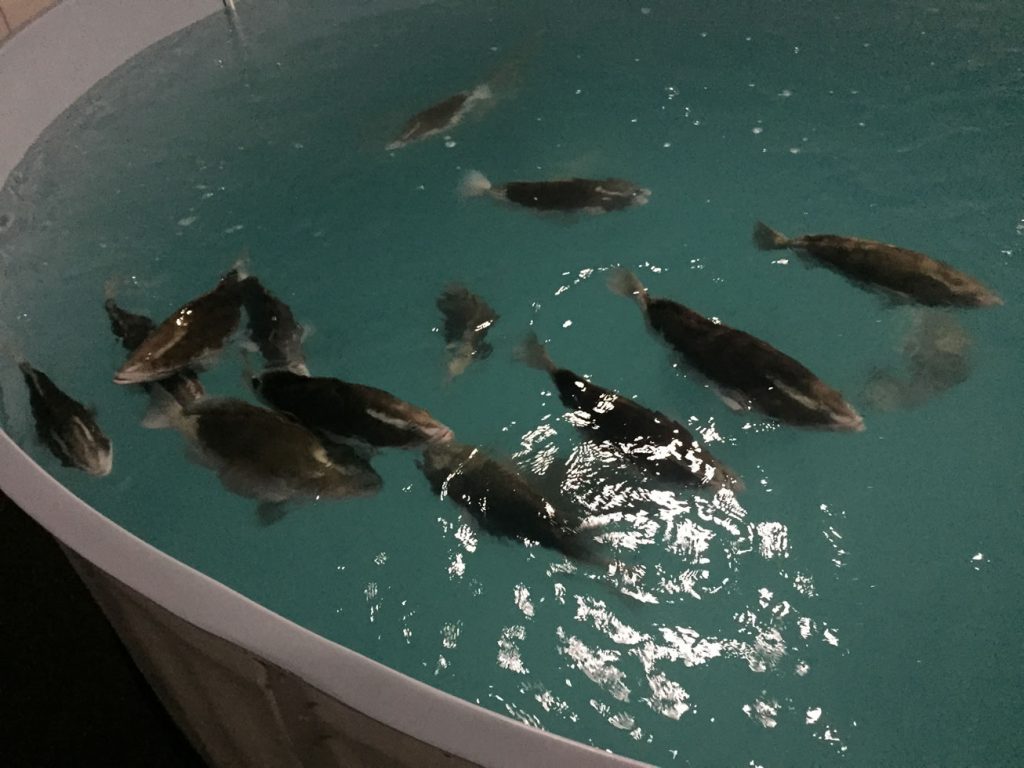NASSAU, Bahamas (July 12, 2017) – With permission from the Department of Natural Resources of the Bahamas, 46 wild Nassau grouper were collected during the open commercial fishing season three years ago. The average weight of each fish was 3-10 lbs. at that time. The fish have been kept in above ground holding tanks and fed a natural diet of squid, capelin, shrimp and fish without any mortality. Today, those same fish weigh 10-25 lbs., each.
Last February 2017, these fish were transferred to large deep tanks at Tropic Seafood, two days before the full moon. Within 24 hours of that transfer, 100% of the fish spawned naturally, in captivity. We were excited to report over 50 million eggs were collected and released to the wild.
While in the open ocean, this species forms spawning aggregations during the Winter months, breeding on many sites throughout The Bahamas. These spawning aggregations may contain between 50 and 500 fish which come to a specific spot each year to join in this behavior, sometimes coming from hundreds of miles away. This is why the Bahamian Department of Marine Resources closes the fishery for wild grouper from December through February each year. They would be too easy of a target during their spawning aggregations and harvesting this resource would endanger their entire population.
What happens next is spectacular– Male and female fish will swim together in what is described as a “moon dance” where they swim together near the sea floor, and shoot up towards the surface, while winding around each other and releasing gametes (the males release sperm and the females release their eggs). It is believed that as the fish swim to the surface, their swim bladders expand and exert pressure on their gametes which causes them to be pushed out and into the water column. With so much sperm and eggs in the water, fertilization takes place and the fertilized eggs drift in the current for about three days until they hatch as larvae. Larval period lasts about 45 days while the larvae go through several metamorphoses before becoming a baby grouper. Amazingly, even at the very first larval stage, body pigmentation resembles those of adult grouper.


